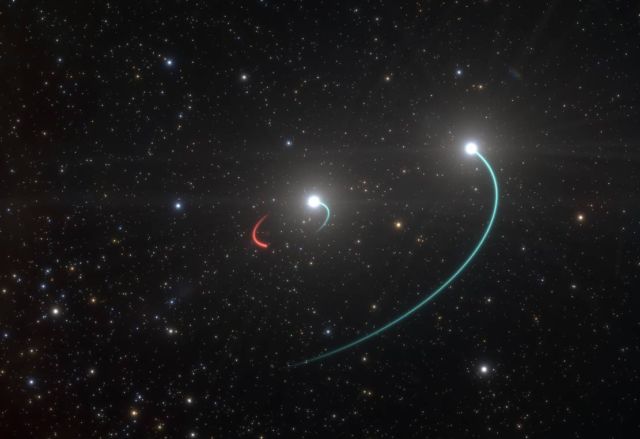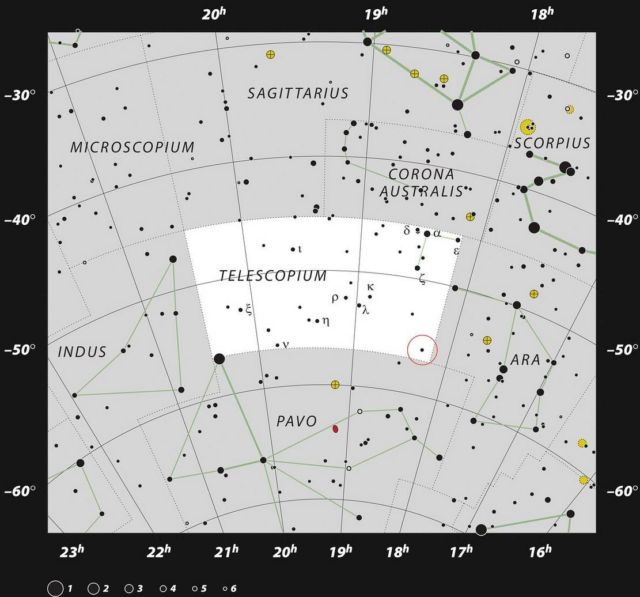ESO instrument finds closest black hole, just 1,000 light-years from Earth. Invisible object has two companion stars visible to the naked eye.
A team of astronomers from the European Southern Observatory (ESO) and other institutes has discovered a black hole lying just 1000 light-years from Earth. The black hole is closer to our Solar System than any other found to date and forms part of a triple system that can be seen with the naked eye. The team found evidence for the invisible object by tracking its two companion stars using the MPG/ESO 2.2-metre telescope at ESO’s La Silla Observatory in Chile. They say this system could just be the tip of the iceberg, as many more similar black holes could be found in the future.
Above: Artist’s impression of the triple system with the closest black hole. Credit ESO/L. Calçada
“We were totally surprised when we realised that this is the first stellar system with a black hole that can be seen with the unaided eye,” says Petr Hadrava, Emeritus Scientist at the Academy of Sciences of the Czech Republic in Prague and co-author of the research. Located in the constellation of Telescopium, the system is so close to us that its stars can be viewed from the southern hemisphere on a dark, clear night without binoculars or a telescope. “This system contains the nearest black hole to Earth that we know of,” says ESO scientist Thomas Rivinius, who led the study published today in Astronomy & Astrophysics.
The team originally observed the system, called HR 6819, as part of a study of double-star systems. However, as they analysed their observations, they were stunned when they revealed a third, previously undiscovered body in HR 6819: a black hole. The observations with the FEROS spectrograph on the MPG/ESO 2.2-metre telescope at La Silla showed that one of the two visible stars orbits an unseen object every 40 days, while the second star is at a large distance from this inner pair.
Dietrich Baade, Emeritus Astronomer at ESO in Garching and co-author of the study, says:
“The observations needed to determine the period of 40 days had to be spread over several months. This was only possible thanks to ESO’s pioneering service-observing scheme under which observations are made by ESO staff on behalf of the scientists needing them.”
source ESO







Leave A Comment